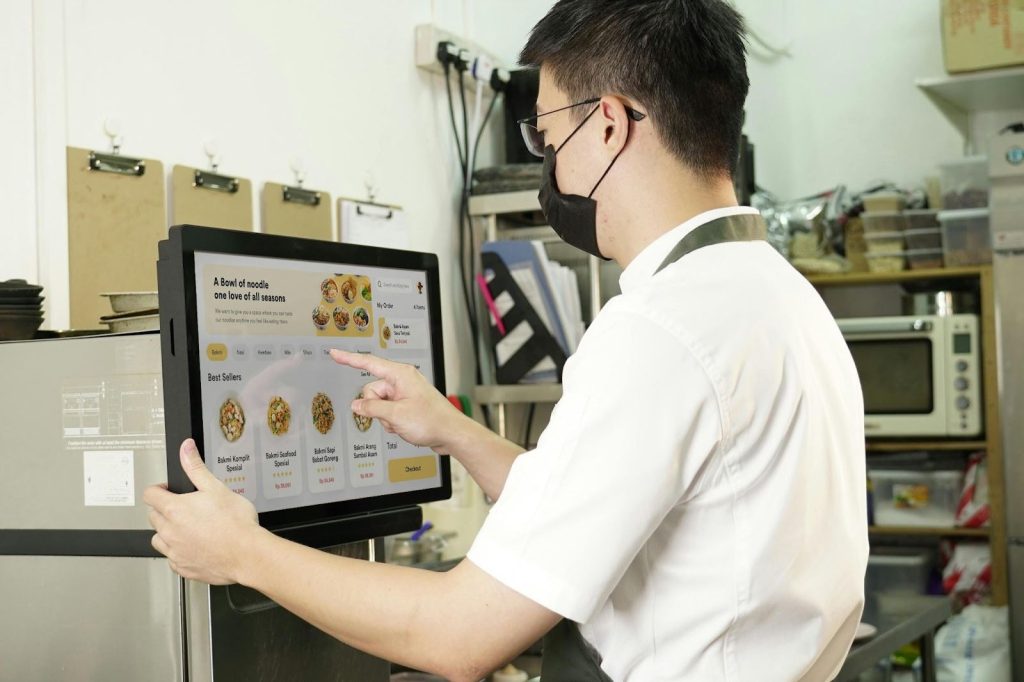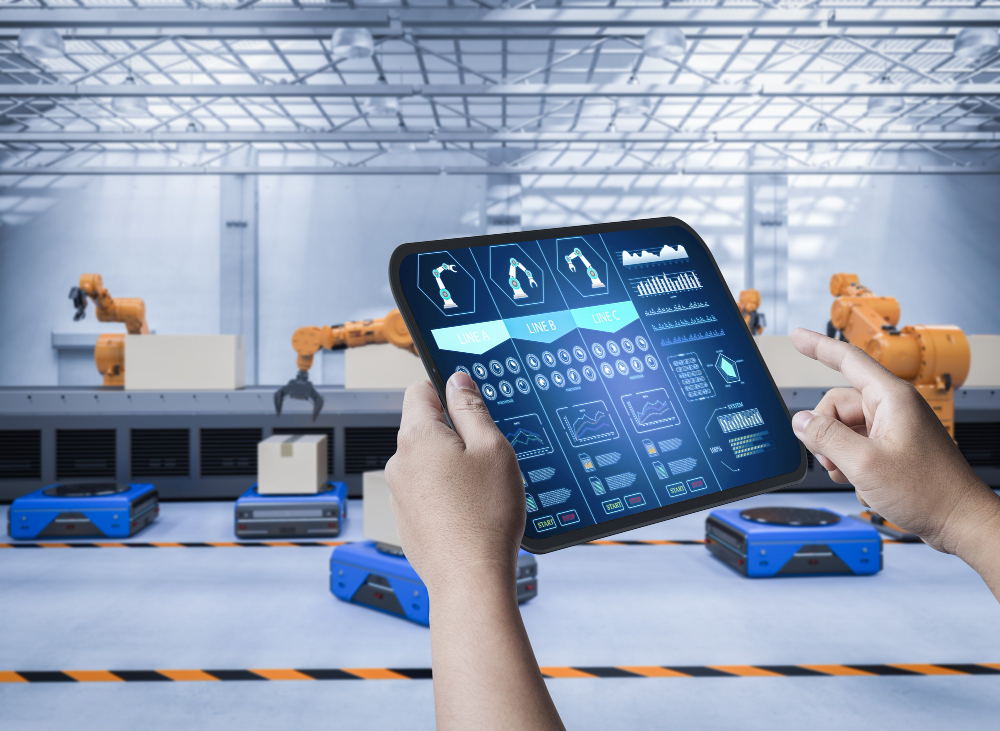Projected capacitive touch screens, also known as PCAP touch screens, are recognized for their responsiveness and durability.
These touchscreens operate by detecting changes in capacitance across a grid of electrodes embedded within a glass or plastic panel.
The technology allows for touch functionality making PCAP touch screens well-suited for a wide array of applications spanning from consumer electronics to industrial automation.
Despite their features, integrating PCAP touch screens is straightforward.
They provide users with seamless interactions, which explains their popularity, across different industries.
Want to get to know more information about projected capacitive touch screens? Let’s explore below.
What is a projected capacitive touch screen?

Often referred to as PCAP for short, this type of touch screen technology relies on the capacitance generated by touch to detect input.
Unlike touch screens that pressure for recognition, PCAP screens identify touches through the conductive properties of human fingers or capacitive styluses.
With its touch sensitivity, support for touch gestures and robustness PCAP technology has become a favored choice for diverse applications ranging from smartphones and tablets to industrial control panels and interactive kiosks.
PCAP Display: Working Principle
Understanding the functioning principle behind a projected display involves a grid composed of conductive electrodes layered on a glass substrate.
When a finger or capacitive stylus gets close, to the screen it disturbs the field created by the grid leading to a change in capacitance.
The touch controller then assesses these capacitance alterations to pinpoint the location and attributes of the touch input.
By examining signals from electrodes the controller can recognize touch actions like pinch to zoom and swiping.
Components of a Projected Capacitive Touch Display
Transparent Conductive Layer
This layer comprises a network of electrodes usually crafted from indium tin oxide (ITO) deposited on a glass base.
These electrodes are organized in rows and columns to create a grid covering the display surface.
When touched this conductive layer detects capacitance changes due to the nature of fingers or capacitive styluses.
Insulating Dielectric Layer
Located between the layer and the protective glass cover, the insulating dielectric layer acts as an insulator.
It separates the electrodes and helps sustain the electrostatic field produced by the grid.
By averting interference between neighboring electrodes, this dielectric layer ensures touch detection and minimizes false touch occurrences.
Protective Cover Glass
The cover glass on a PCAP display acts as a shield for the screen components offering durability and resistance to scratches.
It safeguards the insulating layers from harm, environmental elements, and contaminants.
Moreover, the cover glass reinforces the touch screen’s sturdiness making it suitable for demanding applications across industries.
These elements collaborate to enable projected touch screens to sense touch input detect multi-touch gestures and deliver a seamless user experience.
The transparent conductive layer detects capacitance changes caused by touch interactions while the insulating dielectric layer isolates electrodes and maintains a field.
The protective cover glass ensures the longevity and dependability of the touch screen by shielding it from damage and environmental influences.
Together these components lay the groundwork for PCAP technology adoption in consumer electronics, automotive systems, healthcare devices, retail settings, and industrial environments.
Technology Used Behind Projected Capacitive Touch Screen

Projected capacitive touch screens rely on capacitance-sensing technology to identify touch inputs.
In this method, each electrode within the grid generates a field.
When a finger gets close to the screen, it changes the capacitance between electrodes helping the touch controller accurately detect the touch location.
This technology ensures touch detection and supports advanced multi-touch gestures.
Surface Capacitive vs Projected Capacitive Touchscreens
Both surface capacitive and projected touchscreens are based on sensing principles but vary in their design and functionality.
Surface capacitive touchscreens have a layer of electrodes on the display surface while projected touchscreens have electrodes embedded under the cover glass.
While surface capacitive screens offer durability and resistance to factors, PCAP screens provide touch sensitivity, multi-touch support, and clarity.
Advantages of a Projected Capacitive Touch Screen
Enhanced Touch Sensitivity: PCAP touchscreens offer sensitivity for responsive touch interactions.
Multi-Touch Support: PCAP technology allows for multi-touch gestures like pinch to zoom and rotation improving user experience.
Durability: With no moving parts or pressure-sensitive layers PCAP displays are highly durable and resistant to damage.
Clarity: The absence of layers on the display surface ensures optical clarity and visibility.
Disadvantages of a Projected Capacitive Touch Screen
Expensive: Projected capacitive touch screens are typically pricier to produce compared to touch screen technologies.
Water Vulnerability: While PCAP screens can sense touch through conductive materials they may act unpredictably when in contact, with water or liquids.
Interference Sensitivity: External electromagnetic interference can impact the performance of PCAP touch screens, requiring shielding and design considerations.
What is PCAP Used For?
PCAPs are used in various applications like smartphones, tablets, interactive kiosks, point-of-sale terminals, digital signage, and medical devices.
Consumer Electronics
PCAP touchscreens are extensively utilized in smartphones, tablets, laptops, smartwatches, and other consumer electronic gadgets due to their responsiveness, durability, and multi-touch capabilities.
Automotive Sector
In the field, PCAP touchscreens are integrated into entertainment systems, navigation interfaces, and dashboard displays to offer drivers and passengers user-friendly and interactive controls for managing vehicle functions as well as entertainment and navigation features.
Healthcare
PCAP touchscreens are used in devices, like monitoring systems, diagnostic tools, and medical imaging equipment.
Healthcare professionals can easily use the equipment and access patient information efficiently. Improve workflow in settings.
Retail
In the sector, PCAP touchscreens are found in point-of-sale systems, self-service kiosks, digital displays, and interactive product showcases.
Retailers utilize these screens to enhance customer engagement simplify transactions and create personalized shopping experiences.
Industrial Automation
Within automation, PCAP touchscreens are integrated into human-machine interfaces (HMIs) control panels and operator terminals to aid in controlling and monitoring processes.
These touchscreens boost operator efficiency enable real-time data display and facilitate decision-making in manufacturing environments.
Key Takeaway
Projected capacitive touch screens have transformed our interaction with devices through sensitivity to touch inputs multi-touch capabilities and durability.
By utilizing capacitance sensing technology and transparent conductive layers, PCAP displays deliver touch interactions across industries while elevating user experiences and fostering innovation in touchscreen technology.






